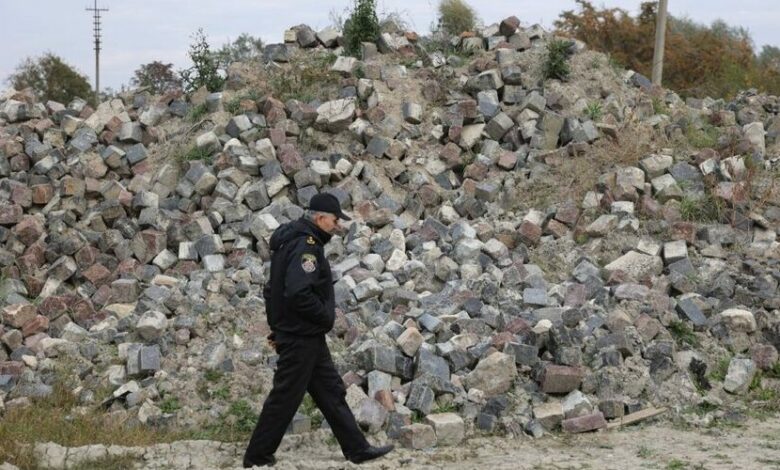
All cobblestones, which are dismantled from the streets of Lviv, are accounted for and transferred to different warehouses. It is mainly stored on the territory of Lvivvodokanal treatment facilities. That is, all the cobblestones from Shevchenka, Bandera, Pekarska and other streets are counted and kept under guard. When it is planned to be used again in Lviv, the transfer takes place at the executive committee or at a session, the meetings of which are public and broadcast online on social networks and YouTube channels of the Lviv City Council. Lviv Mayor Andriy Sadovyi reminded about this in his video message.
As of today, 21,293.22 m2 of cobblestones, 2,244.32 m2 of mosaics, as well as 2,162.83 m2 of various curbstones – side, stone, concrete and granite – are in storage in Lviv. As specified by the Department of Housing and Infrastructure of the LMR, when during repair work it is necessary to dismantle existing cobblestones, or during the work, workers discover cobblestones under the road surface – they are dismantled and accounted for, and according to the acceptance-handover act, they are transported to storage.
Further, when there is a need for cobblestones in district administrations or LKP “Lvivavtodor”, the stones are issued only by decision of the executive committee or a resolution of the session. Paving stones can be handed over only if these documents are available.
“People often have a question: but somewhere there was a cobblestone, and it disappeared. Today, we have more than 23,000 square meters of paving stones and mosaics in our warehouses. It is lying down, waiting for its time, there will be a Victory – we will continue the work,” said Lviv Mayor Andriy Sadovy.
Mostly, the stones are reused for paving roads in Halytskyi and Lychakivsky districts. There are also cases when the city donates several square meters of paving stones or mosaics to religious organizations for paving the sidewalks near the church.

